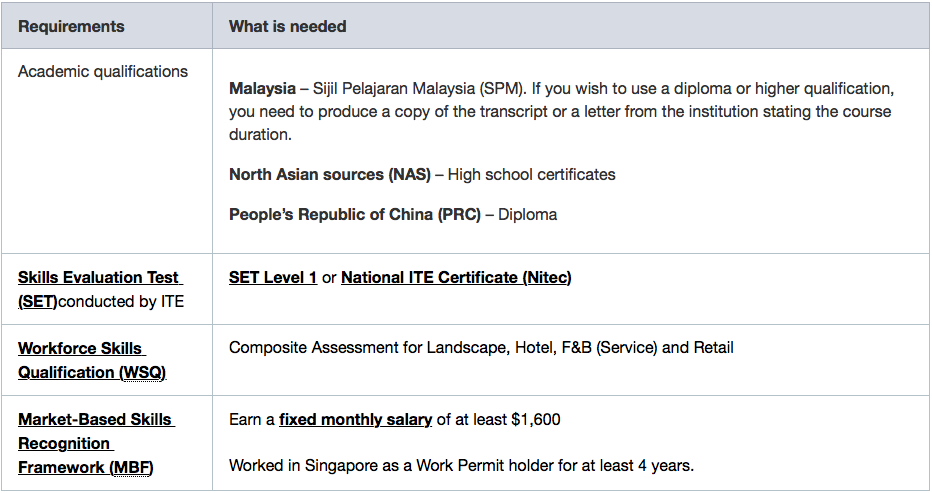Despite repeated announcements and media coverage of the new regulations F&B establishments have to implement to curb the spread of Covid-19, some F&B outlets have been outed for failing to follow the rules. All Singapore F&B businesses operating in Phase 2 have been informed that they are to follow a set of Safe Distancing Measures and Alcohol Consumption regulations to prevent the spike of infections. We recap all the necessary measures to implement at your establishment and what you should instruct your staff so that you won’t be faced with fines and suspensions of your business.
1. Safe Distancing Regulations F&B’s have to follow
Failure to adhere to the safe distancing measures may result in a fine of up to $10,000, jail term of up to 6 months, and the closure of your F&B establishments.
2. Alcohol restrictions
F&B owners must strictly follow the alcohol restrictions that have been put in place by the government. All F&B establishments must prohibit the selling and consumption of alcohol by 10.30 pm daily. F&B business that fails to abide by the time for the sale of alcohol regulations will face a penalty of up to S$10,000, imprisonment of up to six months for first-timers and up to $20,000, imprisonment of up to 12 months for second offenders, and closure of your F&B establishment.
As seen in a recent news article, there are a handful of F&B establishments that tried to trick enforcement officers by selling alcohol in teapots after 10.30 pm which resulted in them receiving fines and the closure of their business.
Remember, it is always never worth breaking the rules just to earn the extra income from the sale of alcohol after the time frame because your overall losses will be greater than losing that sale of alcohol - You have to pay the hefty fines and closure of your business for a period of time!
3. Guidelines that employees have to follow
Before the start of your employees working shift, employers must ensure that their staff adhere to it by reiterating the regulations to them. Employers can also send reminders to their Whatsapp group chat to remind them of the guidelines.
Employers have to:
Ensure that their staff work and break hours are staggered – F&B establishments are encouraged to reduce the number of employees working on the same shift and this can be done by arranging staggered shifts for employees. This is to ensure that not too many people are enclosed in an area together and this ensures that there is a safe distance of 1 meter between all staff.
Health checks and safe entry – Staff should be the priority of the F&B business as they are the ones needed for an F&B establishment to function. All Staff have to take their temperatures twice a day, check in via Safe Entry before entering the outlet and wear their mask at all times.
Ensure that all employees wear their mask at all times. - Masks must cover their nose and mouth. Employees can remove their mask only when they are eating, drinking. Employers have to ensure that they provide their staff with masks to replace due to workplace conditions (E.g. BOH staff may need to replace their mask due to the humidity in the kitchen)
Ensure that employees observe personal hygiene - Employers should provide hand sanitizers to staff to use. Besides that, FOH staff should ensure that they sanitize/wash their hands after clearing the dishes that customers have used to prevent any accidental spread of the virus. For BOH staff, ensure that they wash their hands regularly after touching raw food and after cooking.
Ensure that cleaning of equipment be done regularly- Staff have to ensure that the common equipment used (Woks, Table tops, cloths, Cutting Boards, etc), and common areas (utensil station, children’s play area) are frequently sanitized
4. How can Front of House staff (FOH) ensure customers adhere to safe distancing measures?
As mentioned in one of our previous articles - Staff Scheduling, during peak periods, there should be 3 - 4 staff working at the FOH serving customers and seeing to customers' needs. Brief all FOH staff at the beginning of each shift so they are more organized and know their main duties for that duration.
One staff member should be stationed at the entrance of the F&B establishment to ensure customers adhere to the 1-meter distancing rule, Safe Entry, Temperature, and Mask check. Once the customer has performed all these, the second FOH staff can lead the customer to their seats. Here, staff will have to remind customers to keep their masks on at all times other than when eating or drinking. You can delegate one staff member to take orders (or use contactless ordering) and another one on the floor to clear and sanitize tables.
Let's take a look at how FOH staff can ask customers to adhere to the safe distancing measures.
FOH staff must enforce and ensure that:1. ≤ 5 people on each table and no intermingling between tables - Before the start of service, FOH staff should ensure that each table is spaced at least 1 meter apart. Once the service begins, the FOH staff should ensure that each table has ≤ 5 people.
For households with ≥ 5 members can book ≥ 1 table to share a meal. Before the entry of F&B premises, staff can request to check diners identification cards to verify their claims and may reject diners nicely if they are not from the same household. Once the check is complete, the waiter/waitress must seat them separately with no more than 5 people per table. Staff must remind customers to refrain from the interactions made across different tables.
Queue management - FOH staff have to ensure that markings are placed on the floor to indicate a meter gap and they have to ensure that customers abide by the markings.
Health checks and Safe Entry - As mentioned earlier, one FOH staff will be placed at the entrance of the F&B establishment to ensure that all customers perform their safe entry, health checks and having their mask above their nose before entering the premises of the F&B. Owners/Managers should give stationed staff permission to turn away customers who are not feeling well (with a temperature ≥ of 37.5 degrees Celsius) and customers who refuse to perform safe entry and adorn their mask properly.
Hygiene matters- Besides reminding customers to wear their masks, staff have to ensure that communal amenities (Condiments, Drink Dispenser, Food Samples) must not be provided for customers to take aka “self-service”.
Click here for the safe measurement checklist.
To minimize risk, ordering systems like iCHEF have introduced contactless ordering to be done, where customers can order their food using their mobile phones. This function is great as it reduces contact between customers and your staff, furthermore reducing potential human errors (Staff keying in the wrong orders for the customer). For F&B establishments that are looking for contactless ordering solutions that are subsidized by government grants, click here to find out more.
5. How can F&B businesses ensure that customers abide by the rules and regulations?
F&B Businesses can:
Put up signs in their shopfront to communicate the safe distancing measures to their customers
Make use of the social media platforms that they have and do up a handbook on the regulations that their customers have to abide by. This ensures that customers are aware of the measures they are taking and they will not be inclined to try and break the rules.
You may use this as a reference for your posters:
There is a huge responsibility for Front of House staff as they are ones who have to manage the crowd and ensure that customers follow the rules. Giving your staff full support is important as it can be demoralizing dealing with difficult customers who refuse to heed multiple reminders. Empower your staff to respectfully and politely ask the customers to leave the premises if they are putting your restaurant at risk.
“ LANCE ARMSTRONG: THE RISKIEST THING YOU CAN DO IS GET GREEDY”
In short, no doubt that during these tough periods, having customers will increase your F&B Sales and revenue but it will not be worth it to close your F&B business and lose a few weeks of revenue due to the unabiding of government regulations and unabiding customers. You also have to remember that your staff livelihood depends on you so don’t get greedy!
Caroline Yap is the editor and intern at iCHEF Singapore. She manages iCHEF Club, a growing community of F&B owners in Singapore – organizing events, an online newsletter, and the F&B Entrepreneur Bootcamp, the only regular workshop on opening a new restaurant in the country. In her spare time, she loves drawing, painting, and creating new visuals. Her love for Korean food runs deep such that you can spot her at any famous Korean Restaurant in Singapore.




















